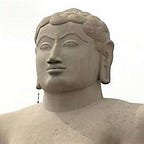Seven Days in a Week
“There are seven days, there are seven days,
There are seven days in a week
Sunday Monday Tuesday Wednesday
Thursday Friday Saturday”
You might know this rhyme for a long time, but have you thought why there should be seven days in a week? Why not five? Why not ten? Or for that matter, why there should be a week after all in our calendar? If you didn’t know, let’s do some time travel to see the origin of the seven day week.
As a second language learner of English, I remember being surprised at the fact that three of the days of the week (Sunday, Monday and Saturday) had the same meanings as their counterparts in Kannada, my mother tongue. This similarity was very conspicuous given the fact that the names of the months of traditional Indian calendar were very different from their western counterparts. As you might know, Indian names for the days of the week are based on the 7 visible planets (Traditionally, the Sun too was considered a planet). Later on, I came to know that even the names like Tuesday and Wednesday (which do not show a direct relation with Mars and Mercury, were indeed coming from old Germanic words which are either equivalent to the planets or another God or deity with very similar features.
If you look at world languages, apparently, there are two distinct ways of naming the days of the week. The first is calling the days of the week as the first day, second day, all the way up to seventh day. Some languages have a ‘Day of rest’ after the sixth day. This system is used in languages such as Hebrew and Mandarin.
In the other scheme, the names of the days are always named on the planets. I will elaborate on this scheme because this one is most likely the fore-runner to the other system.
This naming scheme seems to have originated in or near Babylon around 3000 years ago, and spread around the world in historic times. The names were obviously based on the planet names, but why should Monday follow Sunday or Saturday follow Friday?
Years and years of watching the night sky made ancient civilizations proficient in the planetary movements in the night sky. They figured out it took about 365 days between the consecutive return of seasons, and the Sun complete a revolution in the sky against the background of the stars in the same time. They call this unit as the ‘year’.
They also knew that there were 12 full moons in a year. In other words, there were 24 waxing and waning cycles of the moon in one year. When they had to define a unit of time shorter than a day, they choose to divide a day into 24 parts. This is the unit that has come to be known as an hour. This is why we have 24 hours in a day.
These people also knew that there were seven objects in the sky which moved with the stars being fixed in the background. Each one took a different amount of time to move in the background of stars. Moon took about 27.5 days to return to the same position among the stars. Mercury took about 90 days to return to the same spot among the stars. Venus took about 225 days. Sun took exactly 1 year. Mars took little more than 2 years. Jupiter took about 12 years and finally Saturn took about 30 years.
Now let us write this in a table, in the decreasing order of the revolving time of the planets around the sky in the background of stars, as observed from Earth, and let’s also allocate one hour of the day to each of these planets — because it is exactly what the Babylonians (or whoever originated this scheme) must have done:
Assume on day 1, the first hour (hour when the sun rises is given to Saturn, Then the following hour is given to Jupiter and the third hour to Mars and so on. When you finish 24 hours and go to the next day, you may notice that this hour will be associated with Sun, and that is the first hour of the next day.
Continuing this process repeatedly you will see that the first hours of each day are governed by these planets in the following order — Sun, Moon, Mars, Mercury, Jupiter, Venus and Saturn.
This method adopted by Babylonians went to the west through Greeks and Romans. This was also carried to the Far East, most likely through India. All the major Indian languages follow this naming. Japanese, Korean and Old Vietnamese follow this scheme for some of the days of the week and for the rest the days, there are substitutions such as fire –day, water-day etc. But in Japanese, the planets themselves are named on the five principles (fire, water etc) thus indicating the source of naming to be the same. For some reason, this naming is lost in China, which now follows a first-day second-day kind of naming.
Many of the customs and rituals followed by ancient civilizations had scientific principles behind them. I wish we take some time in understanding the traditions of earlier generations, and take the best part for our future!
-Hamsanandi
(p.s: This was written originally more than 10 years ago, as a speech at my Toastmasters Club)
